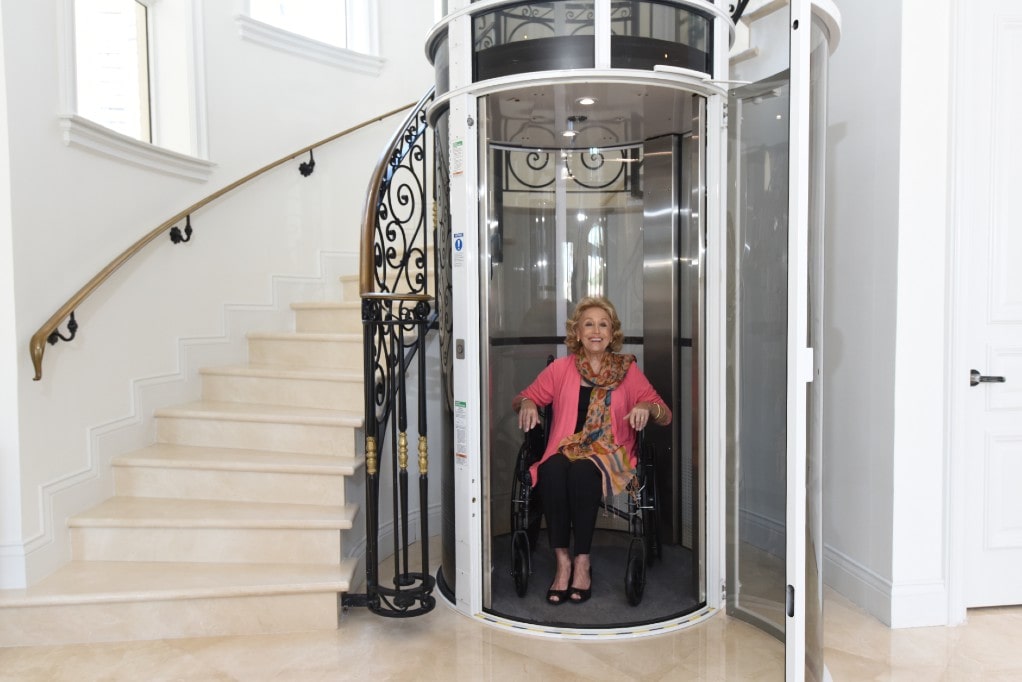We Maintain Lifts to the Highest Possible Requirements: Reliable Solution for All Lift Kind
We Maintain Lifts to the Highest Possible Requirements: Reliable Solution for All Lift Kind
Blog Article
Looking Into the Globe of Lifts: Common Issues Encountered by Different Lift Mechanisms
As we browse with the vertical transportation systems of modern buildings, lifts stick out as a vital element of our every day lives. Nonetheless, behind their seamless operation lies a globe of intricate devices that can often encounter obstacles. From hydraulic elevators to grip systems and machine-room-less layouts, each lift kind comes with its set of usual concerns. Comprehending these obstacles is essential for making sure the smooth performance of these vital systems. Allow's check out the intricacies that underlie the procedure of elevators and the prospective issues that can emerge, shedding light on the complex web of lift devices.
Hydraulic Elevators
Hydraulic lifts, usually liked for low-rise structures, make use of fluid pressure to control the motion of the lift car (lift repair companies). This system includes a hydraulic pump pushing oil into a cyndrical tube, causing the elevator to relocate the wanted instructions. While hydraulic elevators are recognized for their silent and smooth procedure, they do include their very own collection of usual issues
One common issue with hydraulic elevators is oil leakage. Furthermore, problems with the control system, such as malfunctioning shutoffs or a malfunctioning pump, can trigger interruptions in the elevator's motion.
Normal upkeep and prompt repair services are necessary to make sure the smooth performance of hydraulic lifts. By attending to these typical problems proactively, building owners can decrease downtime and make certain the safety and security and performance of their vertical transportation system.
Traction Lifts
When taking into consideration upright transportation systems in buildings, an additional typical type apart from hydraulic lifts is the grip elevator. Grip lifts operate using a system of ropes and weights that move the elevator auto by clutching onto the hoist ropes. This system allows for smoother and much faster upright transportation contrasted to hydraulic systems.
One of the common problems faced by grip elevators is rope wear. The constant activity of the ropes within the traction system can bring about tear and wear over time, possibly triggering the lift to breakdown or end up being unsafe for usage. Regular examinations and upkeep of the ropes are necessary to make certain the elevator's correct functioning and safety and security.
One more concern that traction lifts may run into is related to the control system. Troubles with the control system can result in concerns such as erratic movement, delays in response times, or perhaps full shutdowns. Routine screening and maintenance of the control system are vital to avoid such problems and make certain the elevator's dependability.
Machine-Room-Less (MRL) Lifts

One of the key parts of MRL lifts is the portable gearless grip device that is installed within the hoistway. This equipment effectively drives the elevator car without the demand for large equipment found in traditional grip elevators. In addition, MRL elevators generally make use of a counterweight system to balance the cars and truck, more improving their energy effectiveness.
In spite of their benefits, MRL elevators may face obstacles connected to upkeep and repair as a result of the confined room for devices setup. Ease of access for servicing parts within the shaft can be limited, needing specialized training for professionals. Appropriate upkeep timetables and regular assessments are essential to make sure the ongoing smooth operation of MRL elevators.
Overloading and Weight Limitation Issues
Are lifts outfitted to handle excess weight loads effectively and securely? Overloading and weight limitation problems are essential concerns in elevator operations. Elevator producers style lifts with details weight capabilities to make certain guest safety and security and equipment longevity. Exceeding these weight limits can result in numerous issues, including mechanical failures, delays, and security risks.
When elevators are strained, it places extreme stress on the motor, cables, and various other parts, possibly triggering breakdowns or breakdowns. If they identify excess weight, safety and security systems such as sensors and overload sensing units are in location to prevent lifts from relocating. Furthermore, exceeding weight restrictions can result in increased power usage and wear and tear on the lift system.
To reduce overloading concerns, developing managers must prominently present weight limits in lifts and educate owners on the significance of adhering to these constraints - lift repair companies. Regular upkeep checks by qualified technicians can likewise aid make sure that elevators are operating within risk-free weight parameters. By attending to overloading and weight limit concerns proactively, building owners can boost elevator security and efficiency
Electrical System Failings
Going beyond weight restrictions in lifts can not just lead to mechanical concerns yet additionally potentially add to electric system failings within the lift framework. Electric system failings are a critical concern in elevator lift companies in London operation, as they can create unanticipated shutdowns, breakdowns, or also safety and security hazards.
Normal maintenance and inspections are important to recognize and attend to prospective electric problems promptly, making sure the effective and secure operation of lift lift repair near me systems. By sticking to weight limits and performing routine electrical system checks, structure owners can minimize the danger of electrical failings in elevators.
Verdict

Hydraulic lifts, commonly chosen for low-rise buildings, make use of fluid pressure to regulate the activity of the lift vehicle.When taking into consideration vertical transport systems in structures, one more typical type apart from hydraulic lifts is the grip lift. Traction lifts operate using a system of ropes and counterweights that move the elevator vehicle by grasping onto the hoist ropes. Unlike traditional elevators that require a different equipment area to house the equipment, MRL lifts incorporate most of the elements within the shaft, getting lift companies in London rid of the demand for a committed maker room.In final thought, elevators encounter common problems such as hydraulic breakdowns, traction system failings, and electrical system issues.
Report this page